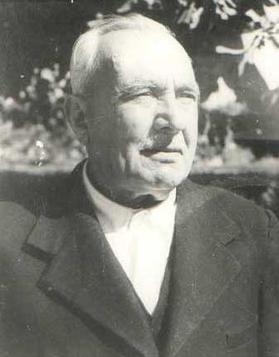The name of a historical person is misspelled by the locals of Utmanzai, Charsadda KPK.
 |
| Khan Abdul Jabbar Khan (Doctor Khan Sahib) |
The name of a historical person is misspelled by the locals of Utmanzai, Charsadda KPK.
They knows that historical person by the name of Doctor Khan Sayd which is misspelled of Doctor Khan Sahib. In Punjab and in some other parts of Pakistan the Pathans are calling by the name of Khan Sahib, so here this historical person also known by the name Doctor Khan Sahib. That historical personality was Khan Abdul Jabbar Khan (born 1882 – May 9, 1958)
popularly known as Dr. Khan Sahib. He was a pioneer in the Indian Independence
Movement and a Pakistani politician. Here are some informations about him. Read about that historical personality and also share with your friends.
Early Life
He was born in the village of Utmanzai, near Charsadda in the
Khyber-Pakhtunkhwa. His father, Bahram Khan was a local landlord.
Khan Sahib was eight years older than his brother, Khan
Abdul Ghaffar Khan (Badshah Khan).
After
matriculating from the Edwardes Mission High School in Peshawar, Khan Sahib
studied at Grant Medical College, Bombay (present day Mumbai). He subsequently
completed his training from St Thomas' Hospital in London. During the First
World War he served in France and after the war, he joined the Indian Medical
Services and was posted in Mardan with the Guides regiment. He resigned his
commission in 1921, after refusing to be posted in Waziristan, where the
British Indian Army was launching operations against fellow Pakhtuns.
Contribution to the Indian independence
movement
In 1935, Khan Sahib was elected alongside Peer Shahenshah
of Jungle Khel Kohat as representatives of the North-West Frontier Province to
the Central Legislative Assembly in New Delhi.
With the grant of
limited self-government and announcement of provincial elections in 1937, Dr.
Khan Sahib led his party to a comprehensive victory. The Frontier National
Congress, an affiliate of the Indian National Congress emerged as the single
largest party in the Provincial Assembly.
Politics
in Pakistan 1947 – 1954
At the time of
independence, he was the chief minister. Later he was jailed by Abdul Qayyum
Khan's government. After Qayyum Khan's appointment to the Central government
and the personal efforts of the Chief Minister of Khyber-Pakhtunkhwa at the
time, Sardar Bahadur Khan, he along with his brother and many other activists
were released.
Back in government
He joined the Central Cabinet of Muhammad Ali Bogra as
Minister for Communications in 1954. This decision to join the government led to
his split with his brother.
In October 1955,
he became the first Chief Minister of West Pakistan following the amalgamation
of the provinces and princely states under the One Unit scheme. After
differences with the ruling Muslim League over the issue of Joint versus
Separate Electorates, he created the Republican Party.
He resigned in
March 1957 after the provincial budget was rejected by the assembly.
In June, he was
elected to the National Assembly representing the constituency of Quetta, the
former capital of Balochistan.
Back in government
He was
assassinated by Atta Mohammad at approximately 8:30 am on May 9, 1958.
"Allama Mashriqi Maliciously Implicated in Murder Case"
This tragic
incident occurred while Dr. Khan Sahib was sitting in the garden of his son
Sadullah Khan's house at 16 Aikman Road, GOR, Lahore. He was waiting for Colonel Syed Abid
Hussein of Jhang to accompany him to a meeting organized in connection with the
scheduled February 1959 General Elections.
The assailant,
30-year-old Atta Mohammad was a “Patwari” (Land Revenue Clerk) from Mianwali
who had been dismissed from service two years previously. Dr. Khan Sahib was
rushed to the Mayo Hospital. However the severe bleeding and grievous injuries
caused by the multiple stab wounds meant that the doctors were unable to save
his life.
The body of Dr.
Khan Sahib was taken to his village Utmanzai in Charsadda about 30 miles from
Peshawar, where he was laid to rest by side of his English wife Mary Khan. All
West Pakistan Government offices remained closed on May 9 and flags flew at
half-mast in memory of Dr. Khan Sahib.
Speaking of his passing, Pakistani President Iskander
Mirza said, about him that he was "the greatest Pathan of his times, a
great leader and a gallant gentleman whose life-long fight in the cause of
freedom, his sufferings and sacrifices for the sake of his convictions and his
passion to do good to the common man were the attributes of a really great
man."
Dr. Khan Sahib was
survived by three sons; Sadullah Khan (a civil engineer from Loughborough
University), Obaidullah Khan (a politician) and the youngest, Dr. Hidayatullah
Khan.
After his death,
Nawab Akbar Khan Bugti was elected to fill the vacancy arising in the National
Assembly.
It is important to
note that Dr.Khan Sahib's brother, Ghaffar Khan and his Red Shirt movement
stayed away from the electoral politics.
Ghaffar Khan
actively opposed the One Unit and Dr. Khan Sahib's government. No major Red
Shirt leader or worker ever joined the Republican Party, founded by Dr. Khan
Sahib. The Red Shirts or Khudai Khidmatgar (servants of God) joined hands with
nationalist and progressive workers and leaders from both the then East
Pakistan and West Pakistan to form the National Awami Party (National Peoples
Party) in 1957.

